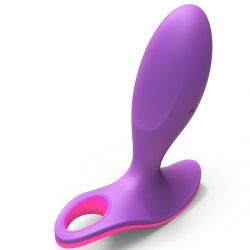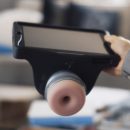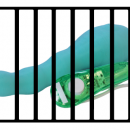Meet Ava, a Fertility Tracking Bracelet
This new wearable aids women trying to get pregnant and learn more about their bodies.

After a successful Indiegogo campaign back in 2016, San Francisco-based Ava Science, Inc. began selling its wrist-worn fertility tracking device. This convenient new data-driven tool aims to aid women in their pursuit to bear children.
A view into a woman’s body
Developed as “a clinically tested device that uses sensor technology to reveal what’s really happening with your cycle,” the Ava Bracelet is worn at night, allowing users a new biological degree of self-discovery.
According to Ava Science, Inc., the device offers flexibility in function as it can be used by women who are already pregnant or in cases where ladies just want deeper insight into understanding their bodies.
A new tool for those trying to conceive
However, the developers specify that Ava will be of greatest interest to women trying to conceive a baby. After it’s worn during the night, Ava is then physically connected to a smartphone running a proprietary app (for iOS and Android), which then visually displays and interprets the collected data.
Ava monitors—through a what is referred to as a “medical-grade sensor pod”—the user’s pulse rate, breathing frequency, quality of sleep, skin temperature, movement, bioimpedance (body composition), perfusion (passage of fluids through the circulatory system), and other measurements. Playfully, Ava Science, Inc. acknowledges that its device looks like a butt.
The company further claims that its bracelet can detect a woman’s windows of fertility better than methods such as LH (Luteinizing hormone) and BBT (Basal body temperature) tests, by giving wearers approximately five days per cycle for optimal conception.
Because of its sensitivity, Ava is not recommended for women who are taking hormonal birth control, or who have fertility conditions. Ava Science, Inc. also does not suggest its bracelet as a means of birth control.
A men’s version sometime soon?
While Ava is purely for women, in the coming years we will more than likely see a similar device for men emerge: a bracelet that might, for example, keep an eye on the wearer’s body temperature and hormone levels.
Coupled with a sperm testing peripheral, some of which we’ve already covered, this wearable could also link with something like Ava. Together they could allow women and their partners to know when they are both biologically sync up for the best possible chance at conception.
Wearables and fertility
Part of the surge of wearable technology, Ava joins the ranks of other fertility devices such as the Wink from kindara.com ($129), the Yono ($149.99), and the tempdrop ($99)—though currently Ava is the most expensive at $199.
Ava boasts a pretty impressive scientific pedigree, including being part of a one-year clinical study by the University Hospital of Zurich where it showed 89% accuracy in detecting optimal conception times.
Always consult your doctor
That being said, and not to be needlessly critical toward Ava or any other means of fertility monitoring, it is always recommended that women consult with a specialist before using one such trackers.
The reason is there might be unique or unforeseen personal biological variations that could mess with the readings.
If your fertility doctor says it’s a good idea, then Ava could be just the thing for women who are trying to conceive—or just want to have a new technological window into the processes and activities within their bodies.
Leave a reply
You must be logged in to post a comment.

















